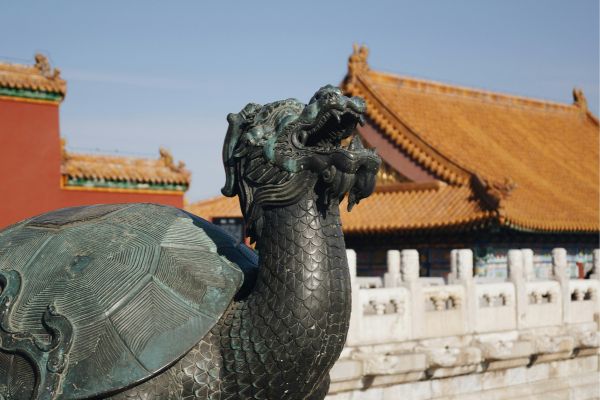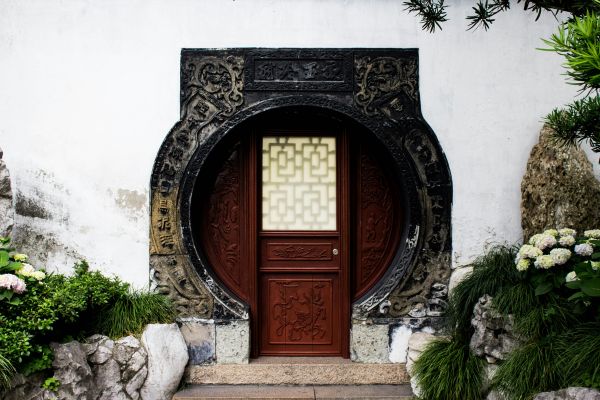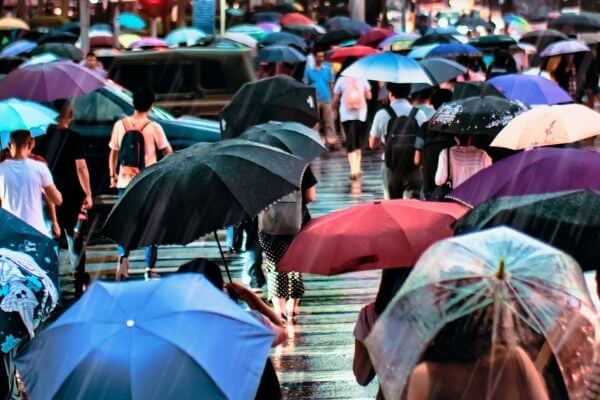
Key Takeaways:
- As the country’s economy booms, civil disputes in China are soaring and swamping the courts. However, the number of Chinese judges has decreased due to the judge quota system at the same time. The surge in cases, coupled with the reduction in judges, has led to a prolonged litigation explosion in courts.
- Two recent notices issued by Chinese local courts manifest that the litigation explosion has delayed the trial schedule for many cases, which amounts to a significant extension in the actual time of legal proceedings.
- The litigation explosion has led many parties, who prioritize time over money, to agree in advance on settling disputes by arbitration.
Chinese courts are in the midst of a litigation explosion. To better understand this “explosion”, let’s look into two recent photos on Chinese social media.
I. Two Notices
The photos show two notices from Guiyang, a city in western China.
The first notice was posted at the entrance of the Mengguan Dispatched People’s Tribunal, which is subordinate to the Huaxi Primary People’s Court, Guiyang.
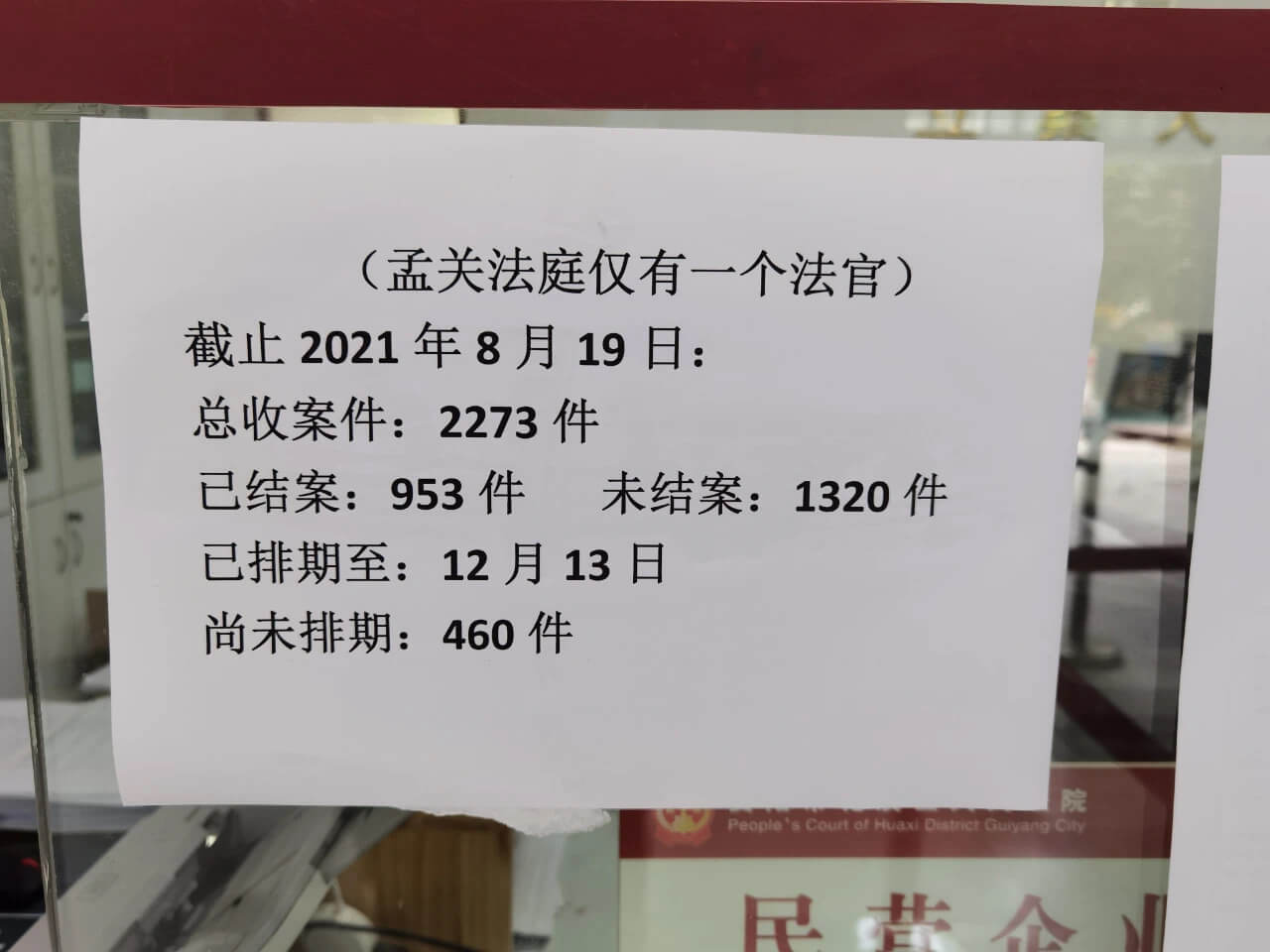
The notice reads, “There is only one judge in the Mengguan Tribunal. As of 19 Aug. 2021, this Tribunal has accepted 2,273 cases, of which 953 were closed while 1,320 remain pending. These pending cases have been scheduled for trial through 13 Dec. 2021, yet 460 of them remain unscheduled.”
This indicates that as early as August, the court has scheduled its trials for the next four months, with 460 cases still unarranged. The litigation explosion has led to a significant delay in trials, resulting in many cases being unable to be heard on time.
The second notice was posted at the Huaxi Primary People’s Court, Guiyang.
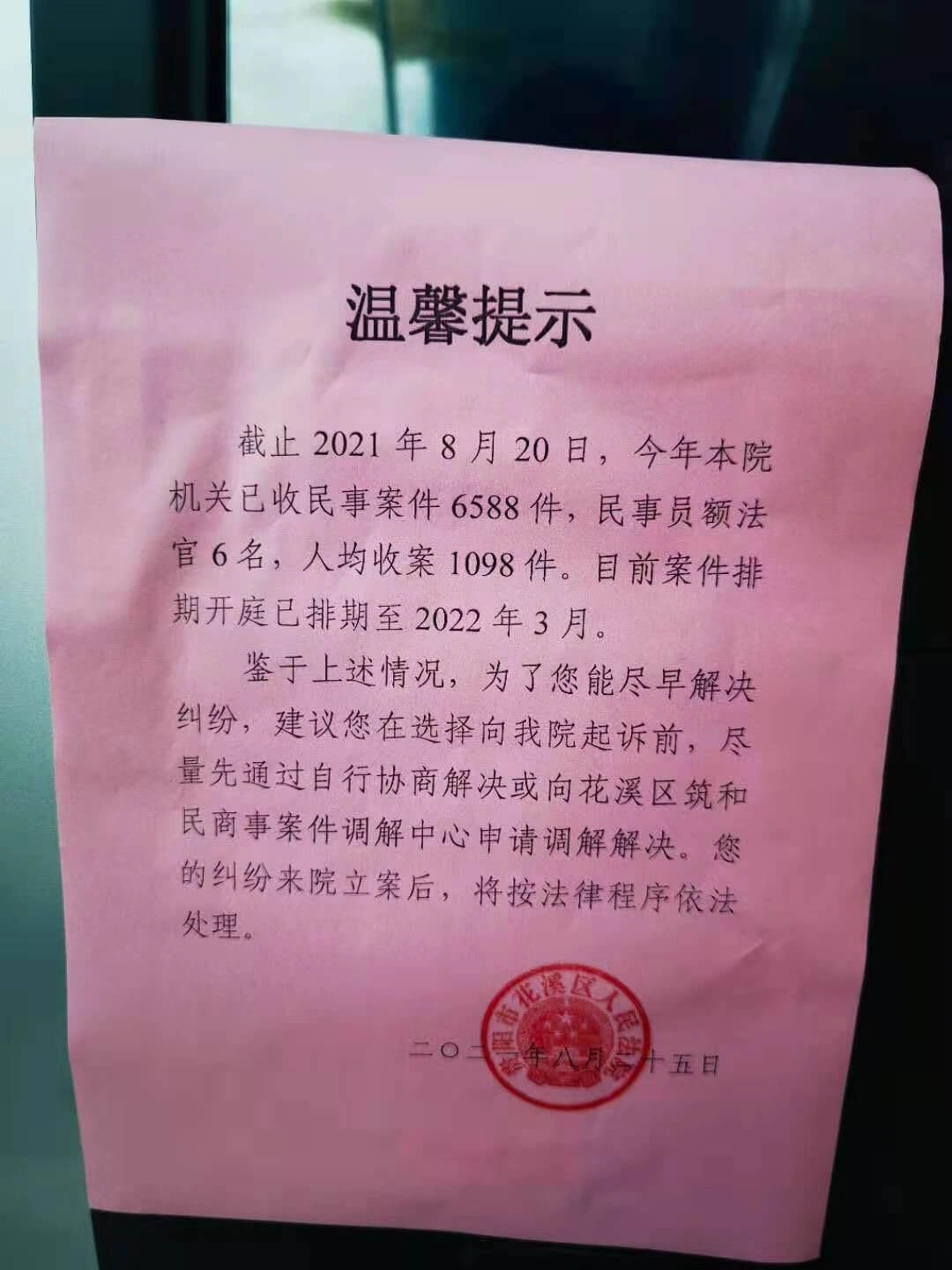
It reads, “As of 20 Aug. 2021, this Court has received 6,588 civil cases this year. With only six judges hearing civil cases, each judge needs to hear an average of 1098 cases. Trials have been scheduled through March 2022 so far.
Given the above, we recommend that before filing a lawsuit in court, you had better resolve disputes by negotiation with the other party or by mediation at the Civil and Commercial Mediation Center of Huaxi District, so that you can settle the dispute as early as possible. Once you file the case in court, we will handle it in accordance with legal procedures.”
The second photo illustrates that the Huaxi Primary People’s Court, which the dispatched tribunal in the first photo is subordinate to, suffers from an even more severe litigation explosion. Its trial schedule is so hectic for the following seven months that the court suggests litigants resorting to ADR mechanisms, such as mediation.
In general, the more economically developed the Chinese region, the more serious the litigation explosion. Courts in Beijing, Shanghai, and Shenzhen are all prime examples of such cases.
Guiyang is a relatively underdeveloped city in China. Even so, its litigation explosion has been grievous enough to suggest that the situation in the more prosperous regions is probably worse.
II. The Litigation Explosion in Chinese Courts
The post titled “Chinese Courts Facing Litigation Explosion” notes that as the country’s economy booms, civil disputes in China are soaring and swamping the courts. However, the number of Chinese judges has decreased due to the judge quota system (法官员额制) at the same time. The surge in cases, coupled with the reduction in judges, has led to a prolonged litigation explosion in courts.
The post titled “A Questionnaire Survey of Chinese Judges’ Job Satisfaction” reveals the main reasons why Chinese judges are dissatisfied with their jobs: high work intensity and long working hours, which are largely due to the litigation explosion.
The post titled “Late-night Call from a Judge: How Chinese Courts Deal with Litigation Explosion” depicts how the litigation explosion has overworked Chinese judges and how Chinese courts have struggled to deal with it.
The post titled “The Future of Mediation in China: Synergy between Litigation and Mediation” focuses on the establishment of mediation in Chinese courts and explains that the reason behind this trend is that the litigation explosion is forcing the courts to divert cases to mediation. From this perspective, the litigation explosion serves as the most potent driving force for the development of mediation in China.
The two notices presented above convincingly demonstrate what we have observed from the litigation explosion.
They also manifest that the litigation explosion has delayed the trial schedule for many cases, which amounts to a significant extension in the actual time of legal proceedings.
In fact, many lawyers have noticed this problem – one of their primary services is now to urge judges to hear the case as early as possible.
The litigation explosion has also led many parties, who prioritize time over money, to agree in advance on settling disputes by arbitration.
Photo by zhang kaiyv on Unsplash
Contributors: Guodong Du 杜国栋
